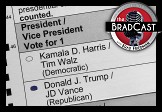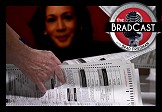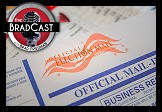Brad,
Bushco is not as much concerned about 2008 as they are about the prosecutors uncovering the fraud in 2006/2008. Bush is out in 2008.
Proof that prosecutors were prevailed upon to not investigate election fraud in 2004/2006 is what terrifies them. "Voter fraud" is non-existent - a canard to.
Election fraud, beginning in 2000, is what got them where they are.
http://www.geocities.com...ruthIsAllFAQResponse.htm
Dec.12, 2000 is a day that will live in infamy. Bush needed the help of five right-wing Republicans on the Supreme Court to stop the recount in Florida and enable him to steal the election. There has been an ongoing controversy regarding the 2004 election. State and national pre-election and exit polls pointed to a Kerry victory. Those who claim that Bush won fair and square are relentless in their attempts to thrash polling analyses which suggest that fraud occurred. Since the media will not release tell-tale precinct-level data, analysts must rely on publicly available polling data. And they have determined that the polls provide powerful statistical evidence of fraud. So-called ”voter fraud” has been shown to be non-existent. It’s a distraction from the evidence of massive “election fraud”. Voters don’t fix elections, politicians do. A few days after the 2004 election, naysayers were quick to dismiss statistical analyses of “spreadsheet-wielding Internet bloggers” as another left-wing “conspiracy theory”.
They continue to maintain that pre-election and exit polls which indicated a Kerry win were biased, but have not provided plausible statistical evidence to back up their claim. Instead, they have resorted to tortured explanations: Kerry voters were more likely to respond to exit pollsters; exit poll interviewers sought out Kerry voters; Gore 2000 voters must have lied or forgot when they told the exit pollsters that they voted for Bush 2000 ; exit polls are not true random samples; U.S. exit polls are not designed to detect fraud; preliminary exit poll data was inaccurate because women voted early and Republicans voted late; Gore 2000 voters defected to Bush at twice the rate that Bush voters defected to Kerry; Bush was an incumbent war president; a powerful Republican GOTV campaign headed by Karl Rove mobilized millions of Christian fundamentalists for Bush, etc. All of these explanations are not supported by factual data and have been thoroughly debunked.
They cite a post-election retrospective NES 600-sample survey as evidence that 7% of former Gore voters lied or forgot they voted for him when they told the exit pollsters they voted for Bush in 2000. One explanation for this is the long-term Bush “bandwagon effect”: former Gore voters wanted to associate with the “winner” of the prior election. But Bush had a 48.5% approval rating on Election Day and Gore won by 540,000 votes. Why would Gore voters lie or forget more than Bush voters? Why would they claim to have voted for Bush when they knew he stole the election? Why would they forgive Bush? Was it because of his job performance?
They note a built-in Democratic bias in the exit polls but dismiss the fact that in every election, approximately 3% of total votes cast are never counted and the majority are in heavily Democratic minority districts. Bush “won” Florida in 2000 by an “official” 537 votes, but there were 180,000 spoiled ballots (3% of the total) and thousands of other provisional and absentees which were never counted. Since more than 65% of the spoiled ballots were intended for Gore, he clearly won the state by at least 60,000 votes. Gore’s nationwide margin must have exceeded two million votes, much higher than the 540,000 recorded. In addition, an unknown number were switched to Bush. In 2004, over 90% of reported electronic vote switching incidents were from Kerry to Bush. And an exhaustive study indicated that 6.15% of Kerry votes were switched to Bush in Ohio’s Cuyahoga County.
They claim that the vaunted 2004 Republican GOTV campaign brought Bush millions of new Christian fundamentalist votes. But they fail to note that according to the National Exit Poll, since 1992 the Democrats have won first-time voters in every election by an average 14% margin. Ruy Teixeira wrote about it in The Emerging Democratic Majority.
They ignore the experience of world-class pollsters Zogby and Harris who claimed that late undecided voters broke 3-1 for Kerry. But this was not unexpected; historical evidence indicates that undecided voters break for the challenger over 80% of the time, especially when the incumbent is unpopular. Bush had a 48.5% 11-poll average approval rating on Election Day.
They dismiss Bush’s 48.5% rating as immaterial, yet every presidential incumbent (Ford, Carter, Bush I) with approval below 50% lost re-election. Every incumbent above 50% (Eisenhower, Johnson, Nixon, Reagan and Clinton) won. There was a near perfect 0.87 monthly correlation between Bush’s approval rating and his 18 pre-election national poll average. The correlation was confirmed when Kerry won the 12:22am National Exit Poll by 51-48%.
They fail to distinguish between unweighted and weighted averages, so do not understand why the evidence shows that Kerry led in the state and national pre-election polls. Bush led in the unweighted state poll average, but Kerry led the weighted average weekly trend in all but the first two weeks in September. The final pre-election weighted average state poll (Kerry 47.88-46.89%) closely matched the final 18-poll national average (Kerry 47.17- Bush 46.89%).
They refuse to recognize the significance of the fact that both state and national projections in the Nov.1, 2004 Election Model had Kerry winning the popular vote by 51-48%. The projections were confirmed by the 12:22am National Exit Poll which Kerry also won by 51-48%. A Monte Carlo Simulation (5000 election trials) forecast that Kerry would win 320-337 electoral votes with 60-75% of the undecided vote - which he did if you believe the National Exit Poll and pollsters Zogby and Harris. The pre-election projections were confirmed in the Interactive Election Simulation Model by the state and national exit polls.
They cite “false recall” and non-response bias to account for the exit poll discrepancies, but how do they account for the deviations between final pre-election state and national polls and the recorded votes? Exit poll non-response and false recall are not applicable to the pre-election polls – and yet the pre-election polls matched the exits. The best evidence indicates that the “pristine” state and national exit polls were close to the true vote, unlike the final exit polls which were forced to match a corrupt vote count. All they can say is that the polls were wrong.
They proclaim that faulty polling explains why Kerry’s solid 50.2-44.8% lead in nine Zogby battleground states declined to 50.1-49.4% in the recorded vote while four states flipped to Bush. Assuming he would win 75% of the undecided vote, Kerry was projected to win all 9 states by an average 53.7-45.9% - a whopping 7% discrepancy from the recorded vote. The pre-election state poll margin of error was exceeded in 6 of the 9 states - all in favor of Bush. The probability that this would occur by chance is 1.92E-08, or 1 in 52 million. They reject the reasonable assumption that 75% of late undecided voters would break for Kerry. But Zogby and Harris, with a combined 60 years of polling experience between them, indicated just that.
They maintain that exit polls are not accurate indicators and aren’t random samples. But pollsters Edison-Mitofsky state in the National Exit Poll notes that respondents were randomly-selected and the margin of error was 1%. And they confirm the margin of error for various exit poll samples in their NEP Methods Statement. Mitofsky only had 30 years of experience as a world-class exit pollster.
They dismiss exit polls prior to the final, but do not question the fact that the final was forced to match the recorded vote through the use of impossible weights and implausible vote shares. This assumes that the recorded vote is fraud-free – not exactly a reality-based assumption.
They do not question why six of the eight states which deviated to Kerry from the exit polls were strong Bush states: TN (1.63), TX (1.65), SD (1.67), ND (2.51), KS (2.37) and MT (0.22). Or that the exit poll discrepancies (shown in parenthesis) were all within the exit poll margin of error. Only two competitive states deviated to Kerry: OR (0.75) and HI (1.25). Is it just a coincidence that Oregon is the only state which votes exclusively by mail (100% paper ballots), and that any discrepancy in that state would be small and could favor either Bush or Kerry? And is it just a coincidence that Hawaii was not exactly a critical state?
They must realize that vote-rich battleground/blue states were keys to the election. Was it just a coincidence that six deep-red states deviated to Kerry but not a single blue state? Was it because Bushco needed to avoid the appearance of a complete 50-state red-shift, so they disregarded these states knowing that Kerry would not come close to winning any of them? Was a nationwide blue-shift thwarted in competitive states? Yes, the East was the Beast, the rest were in the West.
They try to refute the high probability of a Kerry popular vote victory, claiming that the exit poll “cluster effect” invalidated the theoretical 1.0% margin of error. But a probability sensitivity analysis showed that even assuming a 50% increase in the MoE due to the cluster effect, Kerry still had a 98% probability of winning a majority of the popular vote.
They hypothesize that the Final 2004 NEP 43 Bush / 37 Gore weights were due to “false recall” on the part of Gore 2000 voters who claimed to have voted for Bush 4 years earlier. But the weights were irrelevant and misleading since they were mathematically impossible. What is relevant is who the 2004 exit poll respondents said they voted for just minutes before.
They dismiss the 12:22am NEP timeline (13047 respondents) which indicates that 8% of Gore voters defected to Bush in 2004 while 10% of Bush 2000 voters defected to Kerry. Instead, they claim that twice as many Gore voters (14.6%) defected to Bush than Bush voters (7.2%) to Kerry. Is this plausible? Not if you believe that the Bush 48.5% Election Day approval rating means anything. Is this a last-ditch explanation of how Bush won? Yes. And it means that they have no case.
They did not agree that the Final Exit Poll “Voted in 2000” weights were mathematically impossible. But the proof is a trivial arithmetic exercise. It’s not possible that 43% of the 122.3 million who voted in 2004 could have been Bush 2000 voters, since 43% of 122.3mm is 52.6mm and Bush only had 50.5mm votes in 2000. Furthermore, approximately 1.8 million Bush 2000 voters died prior to the 2004 election (based on the annual 0.87% U.S. mortality rate). Therefore, the maximum number of Bush 2000 voters who could have voted in 2004 was just 48.7 million. That’s a physical, incontrovertible fact which they initially tried to refute. But the longer they tried, the sillier they looked.
They finally had to accept an inconvenient truth: the Final National Exit Poll inflated the Bush vote by at least 4 million. The weights were contrived to force the exit poll to match the corrupted recorded vote. Even though the weights were mathematically impossible, the exit-pollsters had no choice but to use them. They hoped no one would notice.
They claim that exit poll non-responders were Bush voters and therefore the exit polls did not reflect the true vote. Yet they cannot logically explain why a linear regression analysis showed that exit poll non-response increased going from the strongest Bush states to the strongest Kerry states, indicating that non-responders were most likely Kerry voters.
How do they explain these implausible changes in the Final NEP 2-party Bush vote shares from 2000 to 2004?
-The Bush share of male voters decreased by 0.2% while his female share increased by 4.2%
-His share of white females increased by 5.0% while his share of white males decreased by 0.9%
-His share of non-white females increased by 4.0%
-His share of female independents increased by 1.8% while his share of male independents decreased by 5.6%
Didn’t females vote 54-45% for Kerry? Didn’t blacks vote for him by over 90%? Didn’t independents split 52-44 for Kerry? Why would independent males defect to Kerry at three times the rate that independent females defected to Bush? Didn’t Nader voters break 3-1 for Kerry?
They ignore the astounding fact that all 22 Eastern Time Zone states red-shifted from the exit poll to Bush and that 12 deviated beyond the exit poll margin of error! The probability of this occurrence is 1 in 32 trillion. The East is a vote-rich Democratic region and the most fertile ground for fraud. Of the 28 states outside the Eastern Time Zone, “only” 20 deviated to Bush while the margin of error was exceeded in “just” 4 states.
They overlook the fact that 41 states favored Bush from the final pre-election polls to the recorded vote; not one of the 10 states which favored Kerry was a battleground state. Forty-three state red-shifted to Bush from the 12:22am exit polls. Oregon was the only battleground state which blue-shifted to Kerry – by less than one percent. It was also the only state in which all voting is done by mail. Was this all just a coincidence, a case of bad polling or a powerful indication that fraud occurred? You decide.
They claim that exit poll data from 1250 voting precincts indicates that there was no tendency for Bush to do better in 2004 relative to 2000 (“swing”) than he did in the exit poll (“red-shift”). They presented their evidence in a swing vs. red-shift scatter chart. They concluded from the best-fit near-zero slope that the exit poll discrepancies didn't have much effect on the Bush vote and therefore fraud was unlikely. But they were comparing apples to oranges. They failed to normalize the 2000 recorded vote in their analysis by not accounting for the Nader effect, uncounted votes and vote-switching on Red Shift vs Swing.
They focused on raw precinct data without considering the following: According to the 2004 National Exit Poll, Kerry won 71% of returning Nader voters compared to 21% for Bush. A similar split would have increased Gore’s margin by 1.4mm. But if 75% of approximately 3 million uncounted votes were for Gore, his margin increases by another 1.5mm. When added to his recorded 540,000 vote majority, Gore’s adjusted margin becomes 3.4mmm. And that does not consider the effects of vote-switching. Thanks to Ohio, we know a lot more about vote-switching than we did in 2000. It’s very likely that Gore votes were switched to Bush. If 3% (1.5 million) were switched, then his final adjusted margin is 6.4 million: 3mm switched + 1.5mm uncounted + 1.4mm Nader + 0.54mm recorded.
They never compared the 1.51% recorded state vote “swing” from Gore in 2000 to Bush in 2004 and the corresponding exit poll 1.75% red-shift. Nor did they bother to calculate the adjusted state-weighted 4.39% vote swing and the weight-adjusted 12:22am National Exit Poll 4.33% red-shift. The adjusted vote swing exceeded the exit poll red-shift in 43 states, 16 in the battleground. A linear regression analysis of red-shift vs. adjusted swing shows that for every 1% increase in adjusted swing, red-shift rose by 0.6%. The naysayer scatter chart shows no such relationship.
They cite as an example the final NY State 2004 pre-election poll which Kerry won 59-40 (matching the recorded vote) to support their argument that the pre-election polls did not match the exits (the NY exit poll was 64-35). Notwithstanding the fact that they cherry-picking polls, they were once again incomplete in their analysis.
They failed to mention that the typical pre-election state poll has a 4% margin of error (600 respondents) while the corresponding exit poll has a 2-3% MoE, depending on the number of respondents. Therefore, a 5% discrepancy between a given state pre-election and the corresponding exit poll is not unusual. In fact, the weighted average vote share of 51 state pre-election polls, adjusted for undecided voters, matched the weighted average exit poll vote share to within 1%.
They expect us to believe that the recorded 59-40 NY State vote was correct. But it’s not plausible: The 12:22am NEP reported that 10% of Bush voters defected to Kerry while just 8% of Gore voters defected to Bush. The NY 2000 vote was Gore 60-Bush 35-Nader 5. Assuming conservatively that in 2004 the defection rates were equal and cancelled each other, the 59-40 recorded vote implies that ALL returning Nader 2000 voters must have defected to Bush- an absolute impossibility. According to the NEP, Kerry won Nader voters by 71-21. If we apply this split to the NY 2000 recorded vote, the vote split would be 63-36. If we consider that uncounted ballots are 70-80% Democratic, the split changes to 64-35, matching the exit poll. The True Vote Model determined that 7% of Kerry’s national votes were switched to Bush. A comprehensive analysis of ballots cast in Cuyahoga County (Ohio) showed that 6.15% of Kerry’s votes were switched. If 4% of Kerry’s NY votes were switched, he won the state by 66-33%.
They claim that the various margins of error used in calculating the probabilities of the exit poll discrepancies were too low. But even assuming a 50% “cluster effect”, the probabilities are still close to zero. The exit poll discrepancy exceeded the margin of error in 16 states - all in favor of Bush. The probability: 1 in 19 trillion. Not a single state deviated beyond the MoE for Kerry.
They fail to appreciate the Law of Large Numbers and find nothing unusual about the fact that Kerry led the National Exit Poll by 51-48% at 4pm (8649 respondents), 7:30pm (11027) and 12:22am (13047). But Bush won the 2pm Final NEP (13660) by 51-48%. Of course, demographic weights and vote shares were adjusted in the Final to match the recorded vote.
They finally agreed, after months of denial, that the Final 2pm NEP “How Voted in 2000” weights were impossible and had to replaced by feasible weights. But they had to compensate for the weights by inflating the Final NEP Bush vote shares in order to match the recorded count. This was necessary in spite of the fact that the Final NEP Bush vote shares were already inflated in order to match the recorded vote. With feasible weights applied to the “pristine” 12:22am NEP vote shares, Kerry won by 52.6-46.4% – a 7.7 million vote margin! Using feasible weights and the Final NEP vote shares, Kerry still won by 51.2-48.4%. The 3.4 million vote margin more than reversed the Bush 3mm “mandate”!
They were forced to suggest this implausible Bush win scenario in the Democratic Underground Game thread:
1) 14.6% of Gore 2000 voters defected to Bush. But the 12:22am NEP reported 8%; it was increased to 10% in the Final in order match the vote.
2) Kerry won 52.9% of voters who did not vote in 2000. But the 12:22am NEP reported he won by 57-41%; it was reduced to 54-45% in the Final.
3) 7.2% of Bush 2000 voters defected to Kerry. But the 12:22am NEP reported 10%; it was reduced to 9% in the Final.
They belittle an extensive sensitivity analysis which indicates that Kerry won all plausible scenarios of voter turnout and new voter splits. For example, assuming 12:22am NEP vote shares and 100% Bush 2000 voter turnout, Gore voter turnout had to be less than 73% for Bush to tie Kerry. Turnout had to be less than 64% for Bush to win by the recorded 62-59 million.
They do not explain how Bush could have added 16 million new voters from 2000. He had 50.5 million votes in 2000; an estimated 46.3 returned to vote in 2004. The decrease was due to two factors: 1) approximately 1.7mm Bush voters died (0.87% annual mortality rate) and 2) an estimated 2.5mm did not vote (assuming a 95% turnout). According to the 12:22am National Exit Poll, Bush won 41% or 10.8 million of 26.3 million new voters. But he needed 15.8 million (60%) to reach 62 million in 2004. The 19% discrepancy is 11 times the 1.72% margin of error (3200 respondents were asked how they voted in 2000). The probability of the discrepancy occurring by chance is ZERO. A solid majority of new voters were Democrats and Independents who together gave Bush an approval rating much lower than his full 48.5% on Election Day, a 1% monthly decline from Sept. 11, 2001. The downward trend continues to this day.
They are hard-pressed to explain this anomaly: In 2000 Bush lost the recorded popular vote by 540,000. But according to the Final 2000 National Exit Poll, he won DNV96 voters (first-timers and others who did not vote in 1996) by 52-44%. Gore won first-timers by 52-43% and Bush won others by 71-26%. In 2004 Bush won the recorded vote by 3 million. But according to the 12:22am NEP, Kerry won DNV2k voters by 57-41%, capturing both first-timers (55-43%) and others (61-37%).
They dismiss the best-case True Vote Model scenario that Kerry actually received 66.1mm votes, 7 million more than the 59.0mm recorded. Assuming that Kerry won 2.6mm (75%) of 3.4mm uncounted votes (based on the Census total of 125.7mm cast), then 4.5mm votes (6.8% of the total cast for Kerry) must have been switched to Bush. After allocating uncounted votes to each state based on its racial mix and assuming the 6.8% switched-vote rate, the model determined that Kerry won 336 electoral votes. This matched the 337 electoral votes forecast in the Election Model Monte Carlo Simulation based on the final pre-election state polls. The base-case estimate was that Kerry would win 75% of late undecided voters.
They don't consider that the evidence of massive fraud in the 2006 midterm elections is hardly mentioned in the corporate media, except for the notorious FL-13 congressional race in which 18,000 mostly Democratic votes were mysteriously missing. But a Pew 2006 Election Analysis describes voting “anomalies” and computer “glitches” that occurred in virtually every state. The fraudulent vote count probably cost the Democrats 10-20 congressional seats.
They ignore the 2006 National Exit Poll in which the 7pm NEP “How Voted in 2004” weights were changed from 47 Bush / 45 Kerry at 7pm on Election Day to 49/43 in the 1pm Final the following day in order to match the vote count! This had a major effect in cutting the Democratic margin in half - from 55-43% to 52-46%. When plausible
 Arlen Parsa of The Daily Background, and now BRAD BLOG Guest Blogger (see his story yesterday on the ties between the U.S. Attorney Purge and gaming the 2008 Election), files a story today at TruthOut destroying the DoJ claims that the reason for some of the purges was that the prosecutors were too lenient on immigration issues.
Arlen Parsa of The Daily Background, and now BRAD BLOG Guest Blogger (see his story yesterday on the ties between the U.S. Attorney Purge and gaming the 2008 Election), files a story today at TruthOut destroying the DoJ claims that the reason for some of the purges was that the prosecutors were too lenient on immigration issues.

 Former Federal Prosecutor: Trump Must Be Sentenced in NY Before Taking Office Again: 'BradCast' 11/20/24
Former Federal Prosecutor: Trump Must Be Sentenced in NY Before Taking Office Again: 'BradCast' 11/20/24 'Bullet Ballot' Claims, Other Arguments for Hand-Counting 2024 Battleground Votes: 'BradCast' 11/19/24
'Bullet Ballot' Claims, Other Arguments for Hand-Counting 2024 Battleground Votes: 'BradCast' 11/19/24 'Green News Report' 11/19/24
'Green News Report' 11/19/24
 Trump Already Violating Law (He Signed!) During Transition: 'BradCast' 11/18/24
Trump Already Violating Law (He Signed!) During Transition: 'BradCast' 11/18/24 Sunday 'Into the Gaetz of Hell' Toons
Sunday 'Into the Gaetz of Hell' Toons Computer Security Experts Ask Harris to Seek Hand-Counts Due to Voting System Breaches: 'BradCast' 11/14/24
Computer Security Experts Ask Harris to Seek Hand-Counts Due to Voting System Breaches: 'BradCast' 11/14/24  'Green News Report' 11/14/24
'Green News Report' 11/14/24 Trump Criminal Cases Fade After Election as GOP 'Does Not Believe in Rule of Law': 'BradCast' 11/13/24
Trump Criminal Cases Fade After Election as GOP 'Does Not Believe in Rule of Law': 'BradCast' 11/13/24 Climate Advocates Brace for Fight With Trump 2.0: 'BradCast' 11/12/24
Climate Advocates Brace for Fight With Trump 2.0: 'BradCast' 11/12/24 'Green News Report' 11/12/24
'Green News Report' 11/12/24 Let It All Out: 'BradCast' 11/11/24
Let It All Out: 'BradCast' 11/11/24 Sunday 'Like it or Not' Toons
Sunday 'Like it or Not' Toons Not All Bad: Abortion Rights Won Big (Almost) Everywhere: 'BradCast' 11/7/24
Not All Bad: Abortion Rights Won Big (Almost) Everywhere: 'BradCast' 11/7/24 'Green News Report' 11/7/24
'Green News Report' 11/7/24 U.S. CHOOSES CONVICTED CRIMINAL, ADJUDICATED RAPIST: 'BradCast' 11/6/24
U.S. CHOOSES CONVICTED CRIMINAL, ADJUDICATED RAPIST: 'BradCast' 11/6/24 ELECTION DAY 2024: Tea Leaves, Probs for Voters, What's Next: 'BradCast' 11/5/24
ELECTION DAY 2024: Tea Leaves, Probs for Voters, What's Next: 'BradCast' 11/5/24 'Closing Arguments' for Undecideds, Third-Party Voters: 'BradCast' 11/4/24
'Closing Arguments' for Undecideds, Third-Party Voters: 'BradCast' 11/4/24 The GOP 'Voter Fraud' Before the Storm: 'BradCast' 10/31/24
The GOP 'Voter Fraud' Before the Storm: 'BradCast' 10/31/24 'Closing Arguments'with Digby and Driftglass: 'BradCast' 10/30/24
'Closing Arguments'with Digby and Driftglass: 'BradCast' 10/30/24 Trump Promises to be a Lawless, Authoritarian President. Believe Him: 'BradCast' 10/29/24
Trump Promises to be a Lawless, Authoritarian President. Believe Him: 'BradCast' 10/29/24 Ballots Burn, Billion-aires 'Obey in Advance', Callers Ring In: 'BradCast' 10/28/24
Ballots Burn, Billion-aires 'Obey in Advance', Callers Ring In: 'BradCast' 10/28/24 Musk's Privatized Internet Satellite System Threatens U.S. National Security
Musk's Privatized Internet Satellite System Threatens U.S. National Security
 VA GOP VOTER REG FRAUDSTER OFF HOOK
VA GOP VOTER REG FRAUDSTER OFF HOOK Criminal GOP Voter Registration Fraud Probe Expanding in VA
Criminal GOP Voter Registration Fraud Probe Expanding in VA DOJ PROBE SOUGHT AFTER VA ARREST
DOJ PROBE SOUGHT AFTER VA ARREST Arrest in VA: GOP Voter Reg Scandal Widens
Arrest in VA: GOP Voter Reg Scandal Widens ALL TOGETHER: ROVE, SPROUL, KOCHS, RNC
ALL TOGETHER: ROVE, SPROUL, KOCHS, RNC LATimes: RNC's 'Fired' Sproul Working for Repubs in 'as Many as 30 States'
LATimes: RNC's 'Fired' Sproul Working for Repubs in 'as Many as 30 States' 'Fired' Sproul Group 'Cloned', Still Working for Republicans in At Least 10 States
'Fired' Sproul Group 'Cloned', Still Working for Republicans in At Least 10 States FINALLY: FOX ON GOP REG FRAUD SCANDAL
FINALLY: FOX ON GOP REG FRAUD SCANDAL COLORADO FOLLOWS FLORIDA WITH GOP CRIMINAL INVESTIGATION
COLORADO FOLLOWS FLORIDA WITH GOP CRIMINAL INVESTIGATION CRIMINAL PROBE LAUNCHED INTO GOP VOTER REGISTRATION FRAUD SCANDAL IN FL
CRIMINAL PROBE LAUNCHED INTO GOP VOTER REGISTRATION FRAUD SCANDAL IN FL Brad Breaks PA Photo ID & GOP Registration Fraud Scandal News on Hartmann TV
Brad Breaks PA Photo ID & GOP Registration Fraud Scandal News on Hartmann TV  CAUGHT ON TAPE: COORDINATED NATIONWIDE GOP VOTER REG SCAM
CAUGHT ON TAPE: COORDINATED NATIONWIDE GOP VOTER REG SCAM CRIMINAL ELECTION FRAUD COMPLAINT FILED AGAINST GOP 'FRAUD' FIRM
CRIMINAL ELECTION FRAUD COMPLAINT FILED AGAINST GOP 'FRAUD' FIRM RICK SCOTT GETS ROLLED IN GOP REGISTRATION FRAUD SCANDAL
RICK SCOTT GETS ROLLED IN GOP REGISTRATION FRAUD SCANDAL VIDEO: Brad Breaks GOP Reg Fraud Scandal on Hartmann TV
VIDEO: Brad Breaks GOP Reg Fraud Scandal on Hartmann TV RNC FIRES NATIONAL VOTER REGISTRATION FIRM FOR FRAUD
RNC FIRES NATIONAL VOTER REGISTRATION FIRM FOR FRAUD EXCLUSIVE: Intvw w/ FL Official Who First Discovered GOP Reg Fraud
EXCLUSIVE: Intvw w/ FL Official Who First Discovered GOP Reg Fraud GOP REGISTRATION FRAUD FOUND IN FL
GOP REGISTRATION FRAUD FOUND IN FL


































